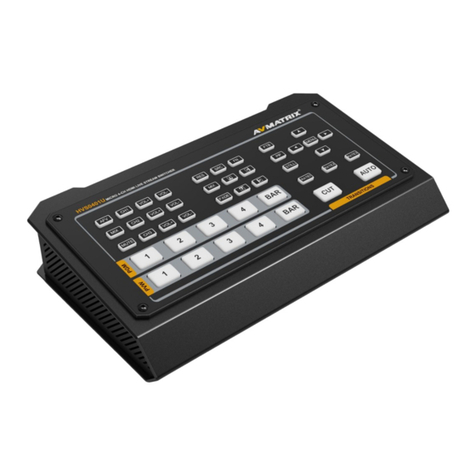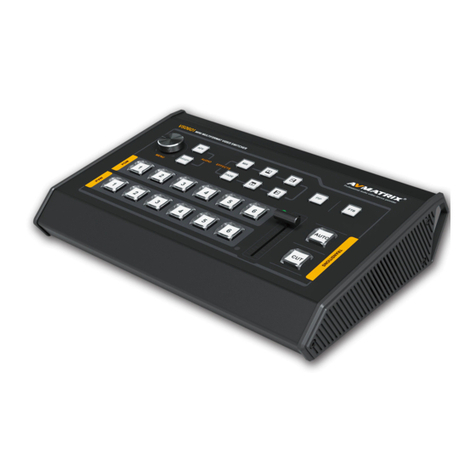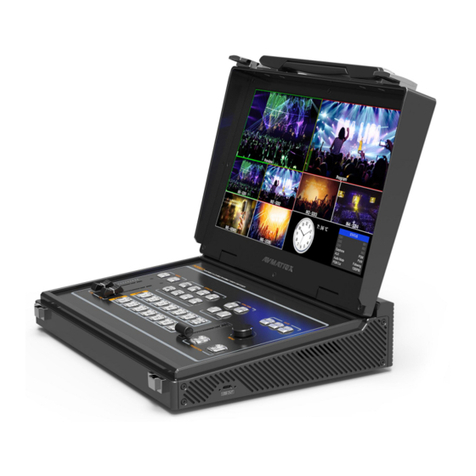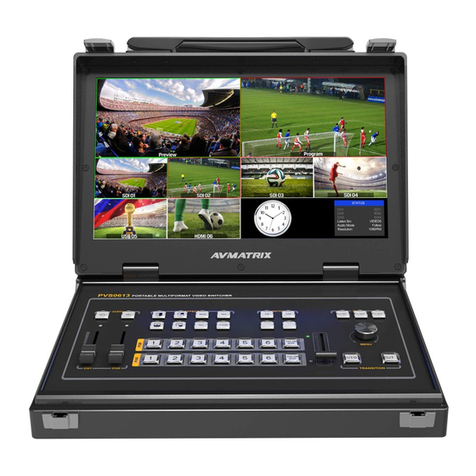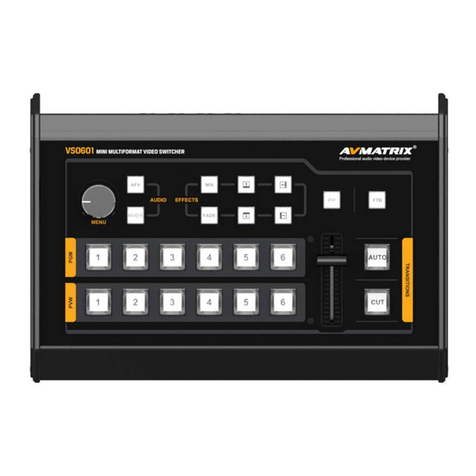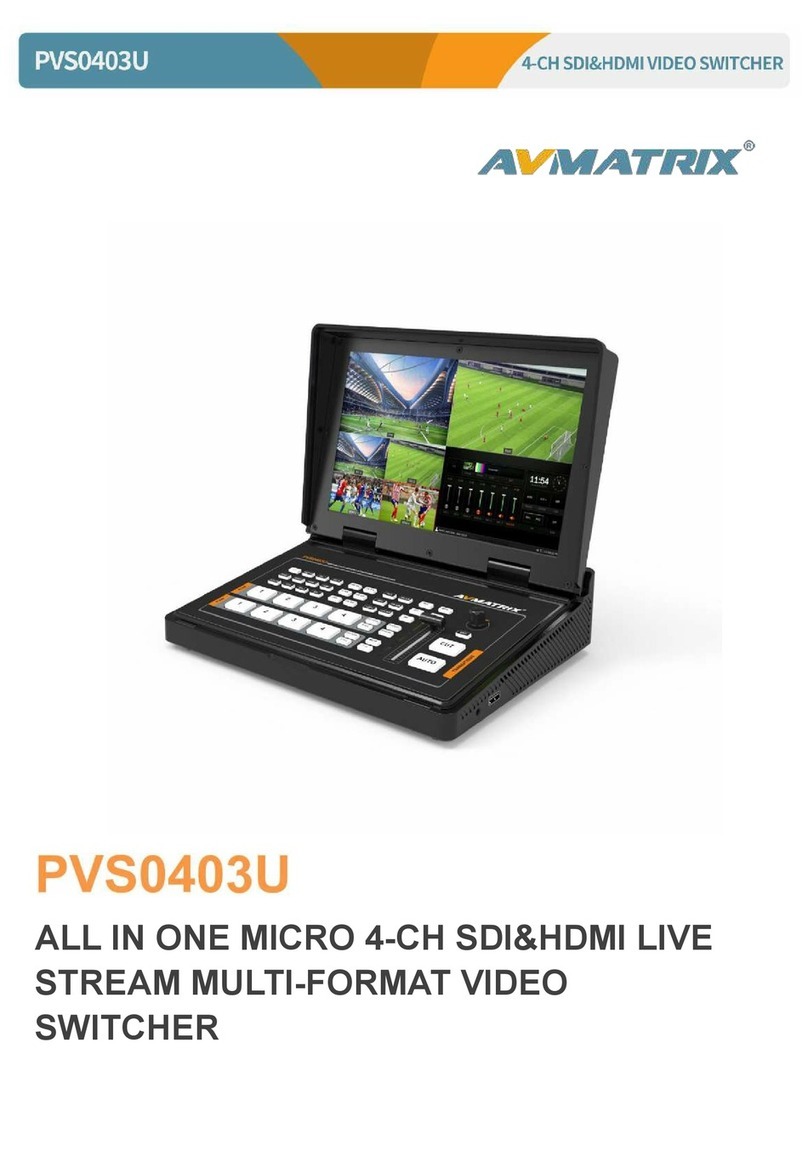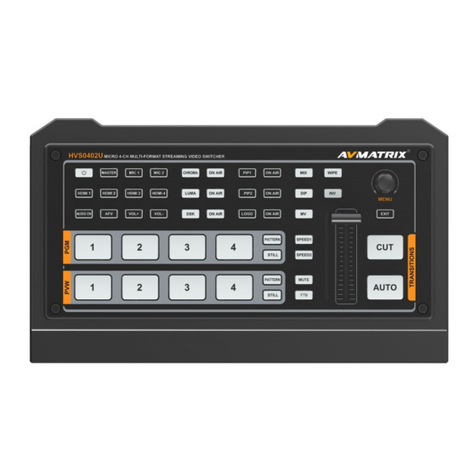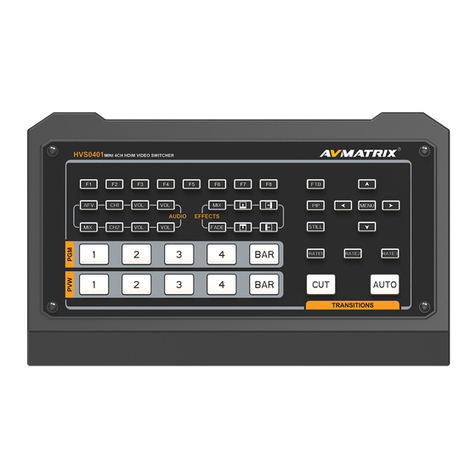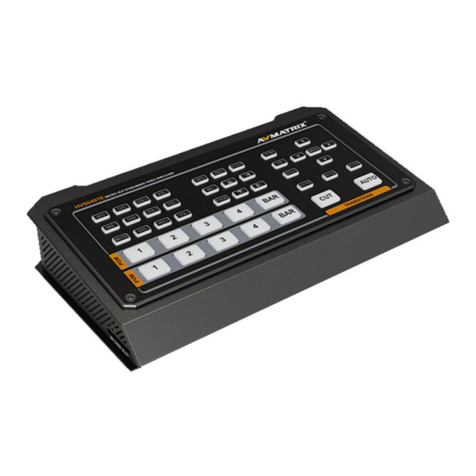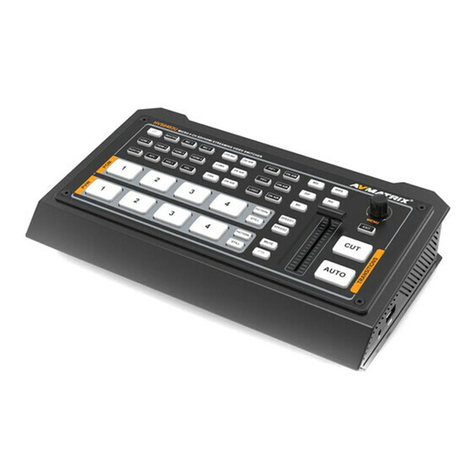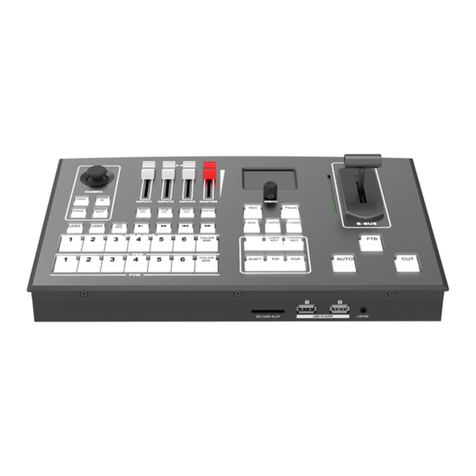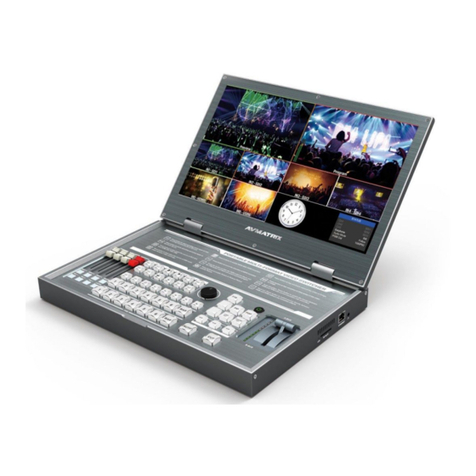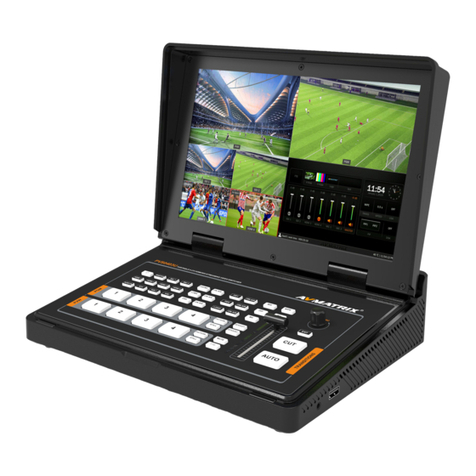Contents
1.Brief Introduction.............................................................................................................................................1
1.1 Overview...................................................................................................................................................1
1.2 Main Features..........................................................................................................................................1
2. Connections ...................................................................................................................................................2
2.1 Interfaces..................................................................................................................................................2
2.2 Specification.............................................................................................................................................3
3. Control Panel .................................................................................................................................................5
3.1 Description ...............................................................................................................................................5
3.2 Keyboard Button......................................................................................................................................6
4. Operation Instrubtion ....................................................................................................................................9
4.1 Multiview Output Layout.........................................................................................................................9
4.2 T-Bar Calibration .................................................................................................................................. 10
4.3 PGM & PVW Switching ....................................................................................................................... 10
4.3.1 PGM & PVW Channel Selection................................................................................................. 10
4.3.2 Transition Control.......................................................................................................................... 11
4.3.3 FTB (Fade to Black) ..................................................................................................................... 11
4.3.4 Source Selection of Channel 5 and Channel 6 ........................................................................ 11
4.3.5 USB Media Player......................................................................................................................... 12
4.4 Transition Effects.................................................................................................................................. 13
4.4.1 MIX Transition ............................................................................................................................... 13
4.4.2 WIPE Transition ............................................................................................................................ 13
4.4.3 FADE Transition............................................................................................................................ 13
4.5 PIP and POP......................................................................................................................................... 14
4.6 Chroma Key .......................................................................................................................................... 15
4.7 Luma Key .............................................................................................................................................. 15
5. PTZ Camera Remote Control................................................................................................................... 16
5.1 Camera Setting..................................................................................................................................... 16
5.2 RS-422 Interface Define...................................................................................................................... 16
6. Menu Settings ............................................................................................................................................. 17
6.1 Status Menu .......................................................................................................................................... 17
6.1.1 Audio Settings ............................................................................................................................... 17
6.1.2 Output Format Setting.................................................................................................................. 17
6.2 Main Menu............................................................................................................................................. 18
6.2.1 System Settings ............................................................................................................................ 19
6.2.2 Network Settings........................................................................................................................... 19
6.2.3 Record Settings............................................................................................................................. 19
6.2.4 TSL Settings .................................................................................................................................. 20
6.2.5 Device Info ..................................................................................................................................... 20
